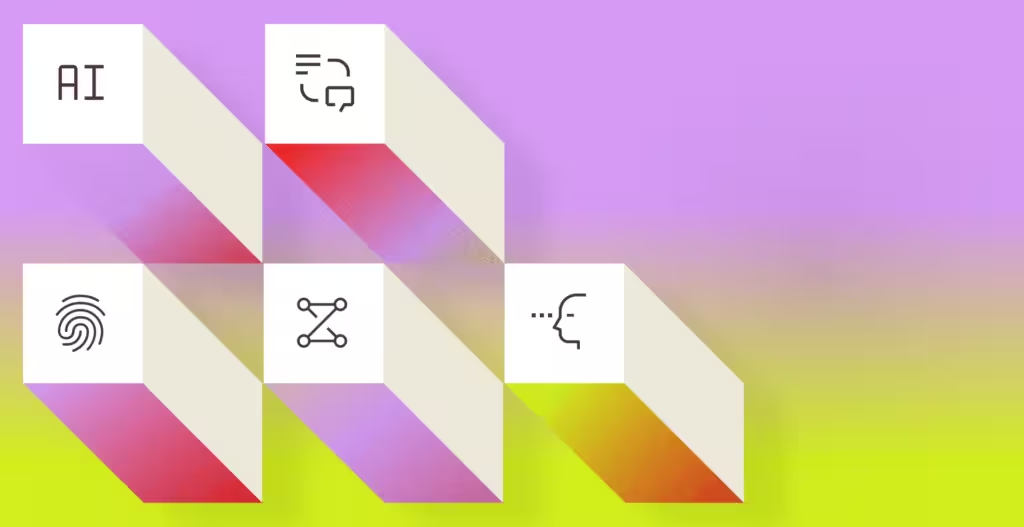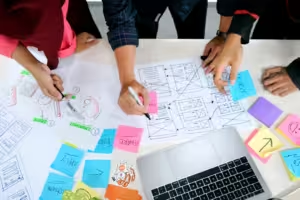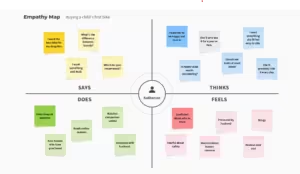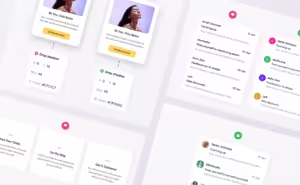
As we move into 2024, the landscape of web and app development is undergoing significant transformation. Emerging technologies and innovative practices are reshaping how developers create, design, and deploy applications. From enhanced user experiences to increased efficiency, these trends are set to redefine the digital space. In this article, we’ll explore five key tech trends that are poised to revolutionize web and app development this year, offering insights into how these advancements can benefit developers and users alike. Whether you’re a seasoned professional or just starting out, staying ahead of these trends will be crucial for navigating the future of technology.
What’s Trending in Tech in 2024
1. Artificial Intelligence (AI) and Machine Learning
“Anybody just getting started in software engineering should be working with AI. If it were me, I’d have that all over my resume. You won’t have a chance without it.” – David Hudson
Artificial intelligence, particularly large language models (LLMs), is transforming tech in 2024. As David notes, “The biggest changes for engineering are LLMs,” which power today’s chatbots. Companies are refining these models for better interactions, while small language models (SLMs) are gaining traction for their efficiency. However, LLMs raise security concerns, with a focus on personal and public data protection expected this year. As AI evolves, developers must view AI expertise as essential, much like coding skills, to remain competitive in the job market.
2. AI Voice (Text-to-Speech)
“This has never been possible before — ever.”
While text-to-speech technology has existed for decades, AI-generated voice is now at the forefront, showcasing remarkable advancements. Last year’s excitement over AI voice generation and cloning continues, with uses ranging from creating deepfakes of musicians to mimicking loved ones, and even scamming unsuspecting individuals. Platforms like ElevenLabs are leading the charge in this space. David, who has digitally replicated his own voice, views this as a pivotal technological shift. As AI-generated voices become nearly indistinguishable from human speech, we can expect more AI presenters in media. Software engineers will face the dual challenge of enhancing voice generation while ensuring user protection.
3. Increased Personalization
“Because of AI, we can code faster. If we can code faster, we can have more customizations.”
Instagram’s Explore page and Netflix’s “Because You Watched” suggestions are remarkably accurate, often to the point of being overwhelming. These platforms analyze our past interactions to curate content that feels most relevant. In 2024, we can expect a surge in hyper-personalization and customer-centricity, influencing everything from TV recommendations to marketing strategies. By leveraging artificial intelligence and machine learning, developers will become content custodians, using user data to craft highly customized experiences in real-time.
4. Internet of Things (IoT) and Internet of Behavior (IoB)
“People are finally picking up on this; they’re even fully decking out trains with IoT.”
Connecting smart devices like Google Nest and Alexa to our home Wi-Fi integrates them into the Internet of Things (IoT), allowing seamless data sharing and control over features like temperature and lighting. This digital ecosystem is now modernizing various industries, including logistics and transportation. In railways, IoT enhances efficiency by enabling operators to track train capacities, perform diagnostics for maintenance, and automate safety alerts. Looking ahead, the Internet of Behavior (IoB) will emerge, using IoT technologies to analyze and predict human behavior. For example, Spotify uses IoB to generate annual listening data and provide personalized music recommendations.
5. Augmented Reality (AR) and Virtual Reality (VR)
“It’s going from a toy to something professional.”
While AR and VR are often seen as design elements, they also impact engineers, as someone must build these experiences. Primarily integrated into gaming, in 2024, spatial computing will shift toward practical uses like immersive entertainment, life-sized video calls, and scalable web browsing. David, who had the chance to demo the Apple Vision Pro, notes, “It’s a real, viable computer on your head.” The key change lies in its quality; with improved graphics, sound, and user experience, the Vision Pro will usher in a new era of blended realities, bringing cinematic technology into our everyday lives.
Conclusion
As we navigate the evolving landscape of technology in 2024, the integration of innovations like AR, VR, and AI will continue to redefine our experiences. From hyper-personalization in digital content to practical applications in industries like transportation and entertainment, these advancements promise to enhance our daily lives in unprecedented ways. The emergence of devices like the Apple Vision Pro signifies a shift towards immersive, blended realities, merging the virtual and physical worlds. Embracing these technologies will not only empower developers and engineers but also create richer, more engaging experiences for users, paving the way for a future where technology seamlessly integrates into our lives.




